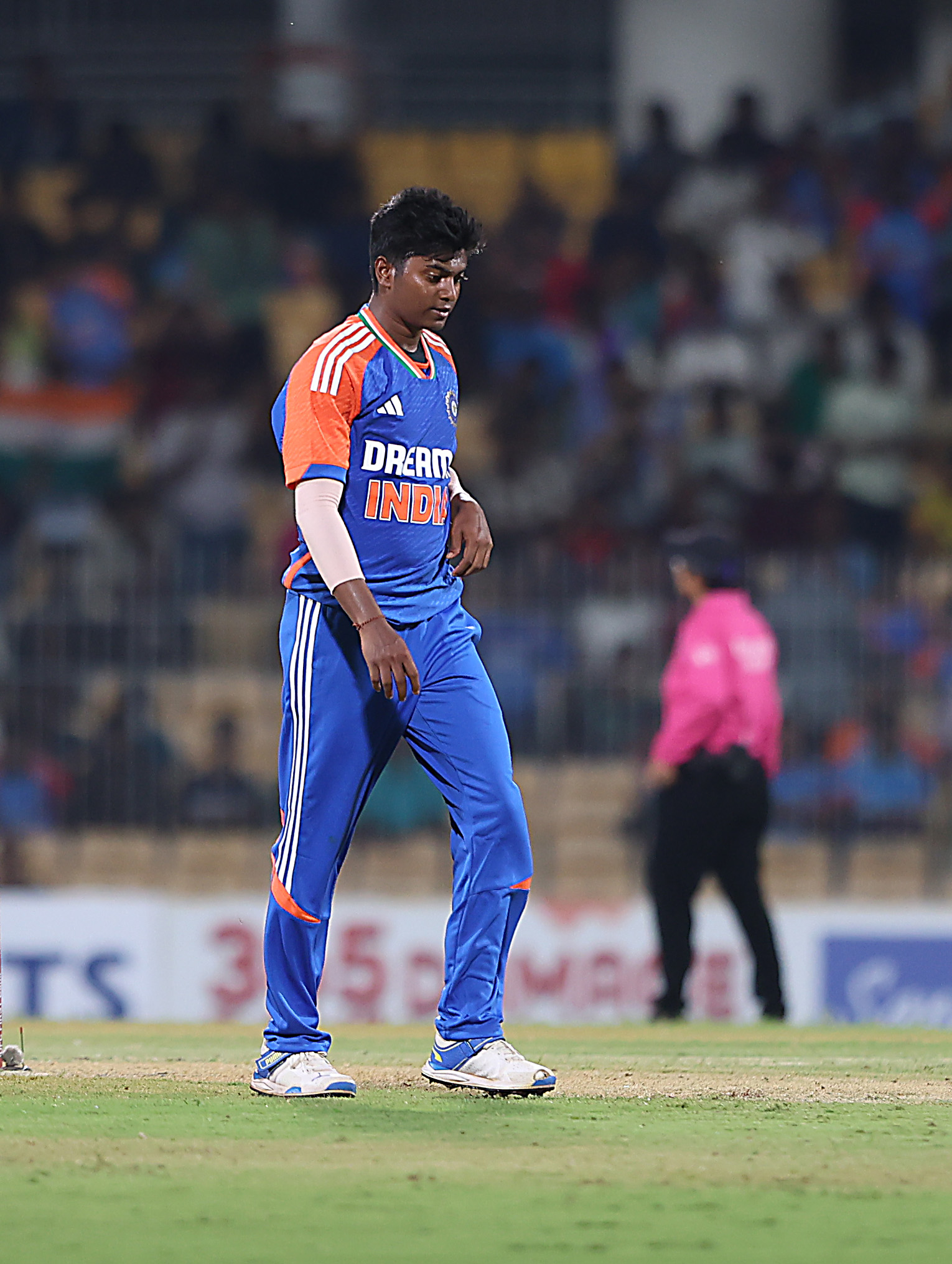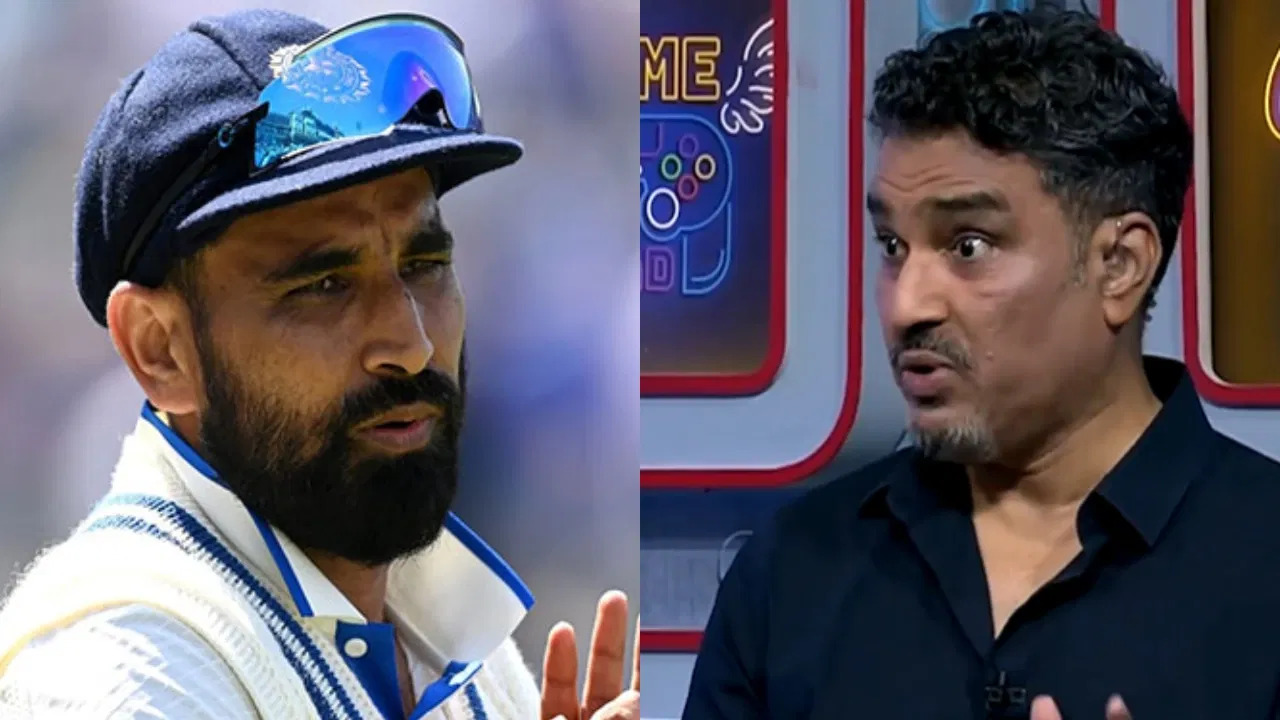The middle stump guard had been occupied by Marizanne Kapp. Pooja Vastrakar struck three balls in a row on a full length right outside off-first, a play, and a miss as she entered her second Power Play over. The latter was upheld to a point. Kapp reset to an off-stump guard just before the third, but he miscuted it over the covers for a brace. Vasktrakar saw the switch without delay.
The bowler chose to strike the fourth delivery at the hard length of the Test match in the middle with a little bit more velocity, which gave Kapp little space as she attempted to heave it over midwicket. As a result, Shafali Verma lost ten shots because Kapp hurried into her shoot and mistimed a dolly.
For a very long time to come, Vastrakar will cherish her 50th T20I wicket. Tuesday’s setup and a four-ball match between one of the best batsmen in global cricket right now and a rejuvenated pacer as India’s new-ball bowler set up the most embarrassing batting performance of this T20I series for South Africa.
The Chepauk wicket had slowed down from the runs-laden belter it had turned out to be just last Friday, for the third game in five days. Vastrakar, unlike South Africa, was fast to adjust to the wicket’s erratic bounce and slowness as the series went on, and he continued to attack the stumps with unwavering discipline over length and line.
She achieved her career-best T20I stats of 4/13 throughout the process, and she became just the second Indian pacer to 50 wickets in the format, behind Jhulan Goswami. Vastrakar hit 13 boundaries in her 19 balls to put pressure on the visitors, who were determined to continue playing their style of cricket, which in retrospect turned out to be too aggressive for the circumstances.
Vastrakar ultimately gave up just two boundaries: one to Wolvaardt and another to Anneke Bosch while she was dying.
The reply was powerful: a length ball that travelled across to push it to the leg-side but missed it entirely, trapping Bosch LBW by hitting her on the front pad right above the knee roll. The tempo forced Nadine de Klerk to chop on for a third-ball duck in the same over because she was limited for room. Upon South Africa’s collapse from 57/3 to 61/5 in the eleventh over, the visiting team realised they had also lost the match. After a couple of strong batting performances on the same pitch to make 189 and 177 earlier in the evening, Eliz-Mari Marx nicked to the ‘keeper to bring up her fourth and final over of the match.
Vastrakar has undergone a subtle metamorphosis. Her career as an Indian cricketer had started with the new ball, but due to recurrent injuries and time lost to injury, the team had to turn elsewhere, despite her infrequent use as a backup. However, since the Amol Muzumdar era began, the Madhya Pradesh pacer has steadily reclaimed his position as India’s front-row strike bowler.
Vastrakar worked hard at the NCA under Troy Cooley, who was also India’s bowling coach until January. Cooley helped her gain new skills and increase her fitness level. She received good marks for her game awareness, control, and increased frequency of unleashing the bouncer. That was demonstrated by her consistency in the two Tests in December.
No bowler has taken more wickets for India in the format since the 2023 T20 World Cup than Vastrakar, who has 23 at an economy of 6.61 and average of 15.86. During India’s April visit, she was all fire in the five-match series in Bangladesh, the site of the 2024 edition, but she failed to accumulate many wickets. Vastrakar simply brought the same form to Chennai, where she used it to stamp her dominance over an even more formidable, well-prepared opponent. She won Player of the Series for her eight wickets at an economy of just over 6.5 and an average of only 9.12.
It’s interesting to note that during the course of the three games, she claimed eight wickets in Chennai, including one each of the first six batsmen in South Africa’s deep batting order. This is not merely a factual statement; rather, it illustrates her effectiveness with both the new and old ball. Vastrakar has made significant contributions not only during the powerplay but also in the middle overs and in the dying overs, swiftly becoming skipper Harmanpreet Kaur‘s preferred bowler in the shortest format.
Vastrakar had conceded just three runs in her maiden two-over period with the new ball in the series opener on a surface that was batting-friendly and had almost had Laura Wolvaardt caught at backward point. She came back in the slog-overs and set up another opportunity off the leading scorer in the game, Tazmin Brits, but it was unsuccessful once more. Vastrakar finished with 2/23 thanks to a fantastic last over that had just six runs and two crucial strikes, including Brits, to limit the damage. Vastrakar ended up being the only bowler from both teams to bowl at a pace lower than run-a-ball in a game that saw 366 runs scored.
Despite giving up 37 runs in her four overs during the powerplay in Game 2, she dismissed a fast-moving Wolvaardt and came back at the finish to remove de Klerk before he could do much harm.
In the series finale, Vastrakar raised her hand to write a comprehensive victory for India when first-choice Renuka Thakur failed to show consistency or form and was dropped. It was only a continuation of the fight she had displayed in Bengaluru during the 2nd ODI as well.
Vastrakar skillfully took the speed off and claimed two important wickets in consecutive slower deliveries to completely halt South Africa’s momentum in what could have been a world record chase of 325. South Africa was only defending 11 off the last over and had given up five runs on the first two balls off full tosses.
Vastrakar watched the spinners take all ten wickets in the first innings of the one-off Test last week, her third of the season, but she kept bending her back and bowling the hard lengths to prevent South Africa from scoring readily off her speed, finishing with 16-7-35-1.
As she set up India’s decisive 10-wicket victory, Smriti Mandhana praised her teammate, saying, “It’s just brilliant to watch.” It’s been a long series, and as a batter, I can feel my body. However, I’m not sure how she managed to achieve it as a bowler. It’s incredibly difficult to bowl a certain number of overs in one-day cricket, the Test, and then the Twenty20 Internationals.
I have no idea how she has handled her workload as a bowler, let alone as a batter. It has been remarkable to see her go about her work day in and day out.
“I don’t know if the matches from the Bangladesh series were shown live here or not, but the way she bowled, especially in death, at times I was unable to see the ball. She was bowling so quickly that it was really difficult to sight a ball. Seeing it in person, at least, seemed like more.
“So, it was common knowledge that she had changed in the last two or three months in terms of her bowling style. We were all really confident going into the series. However, it was really impressive that she was able to return with those kinds of match stats given the way she bowled, particularly in the first two matches when the ground was extremely flat.
“Hopefully she keeps doing the same thing again and again, and she’ll be a really crucial [factor for India] going into the World Cup,” the vice-captain of India stated.
Also Read: India has selected Gautam Gambhir as its head coach
Prior to this multi-format series, Vastrakar was questionable to start because of a shoulder ailment she sustained during the T20I tour of Bangladesh. For a brief while, though, the revelation had revived questions about her fitness and whether India should just give her a pass since they have two World Cups coming up in quick succession. Vastrakar has silenced the rumours with his Player of the Series honour in the Twenty20 Internationals, capping a month of hard work in the two other forms. And perhaps the new-ball controversy as well.










 Win Projections to be updated soon
Win Projections to be updated soon


















